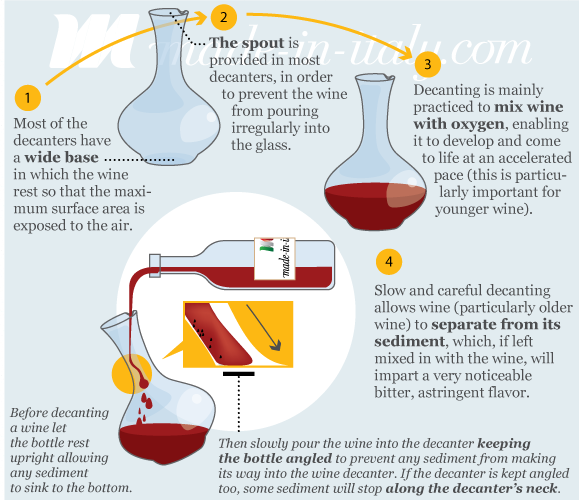Serving Italian Wine: The Right Glass for Each Bottle
To get the most out of your wine tasting experience, the final step is in the way you serve it. To ensure you can savour all its finest aromas and flavours, consideration should be given to the temperature at which you serve your wine and the selection of appropriate glassware. For quality red wines, the use of a decanter will aerate the wine, releasing even more flavour.

Most people assume that all white wines ought to be served cold and all reds at room temperature – some will even warm their reds. But this is not always the case and may have a negative impact on the taste. Serving a wine too cold will conceal its flavour, while serving it too warm can make it taste dull, flat and alcoholic. There are no hard and fast rules and personal preference is important too – something that will come only from experimentation and by gaining as much tasting experience as you can.
Many young Italian reds, like Dolcetto, young Chianti and Valpolicella, are at their best from 50 – 60˚f. Mature, oak-aged reds are preferable at 60-64˚f. Italian whites are perhaps easier to manage – although as most refrigerators are kept at 35-40˚f it is perhaps better to lift them out shortly before you intend to drink them, so as not to over-chill them. Sparkling wines are best served just slightly colder than still whites. Rosé wines are often a matter of personal preference – some prefer them at the same temperature as whites although styles vary greatly from dry to the off dry modern “blush” wine. Some will say it is better to serve wine too warm than too cold. Again, this is a matter of opinion. But ask yourself when you are drinking a chilled wine: has its flavour improved since it has been out of the fridge? Can you taste delicate nuances of flavour that you could not before?
Decanting is important for getting the most out of red wines – a fine Brunello, Amarone or Barolo will undoubtedly benefit but in fact any full-bodied red can be substantially improved by decanting. The best decanters will have a wide base in which the wine will rest so that the maximum surface area is exposed to the air. Wines that have been in bottle for a long time will be closed and difficult to taste, and simply pulling the cork will do little to aerate them. The other benefit of decanting an old wine is to remove the sediment that gathers in the bottle. You should pour the wine very gently into the decanter to ensure that the sediment remains in the bottle. Aim to decant your wine between 30 minutes to 1 hour before you intend to drink it.

And finally, do not underestimate the importance of good wine glasses. The very best are made from lead crystal which has the advantage of allowing the wine to breathe more when it is swirled. But the shape is as important as the quality of glass – the glass should be shaped so as to allow a good swirl to release the aroma of the wine, with a long stem that you can hold on to so as your hand does not heat up the wine inside. The top of the glass should be narrower than the widest part of the bowl, to allow for swirling. And of course, the glass should be appropriate for the wine you are drinking – particularly for sparkling wine. The traditional flute is not just an attractive and celebratory glass, its narrow surface area and extra height ensure that the wine remains fresh and bubbly.
To see for yourself, try decanting half a bottle of an average red wine and pouring two glasses, one straight from the bottle in a tumbler, and one from the decanter into your best wine glass. Taste them side by side – the decanted wine from the glass will undoubtedly taste superior.
Serving Italian Wine

The decanter
Decanting is important for getting the most out of red wines. Decanters are used for serving wines that are laden with sediments in the original bottle. These sediments could be the result of a very old wine or one that was not filtered or clarified during the winemaking process.

